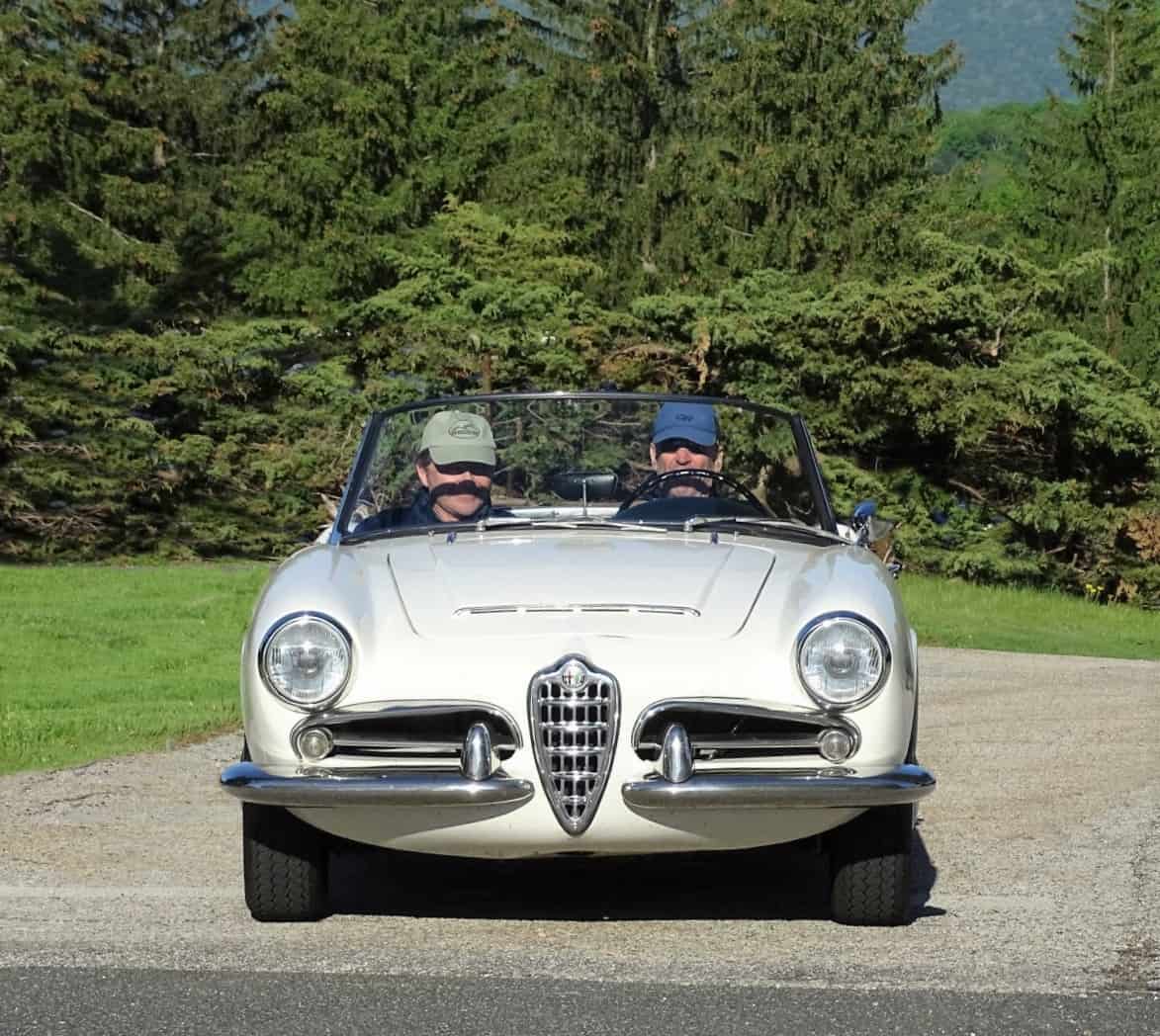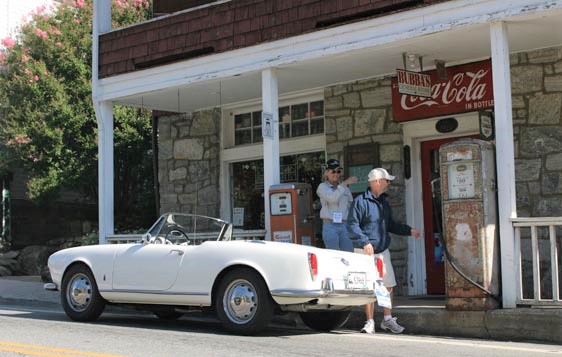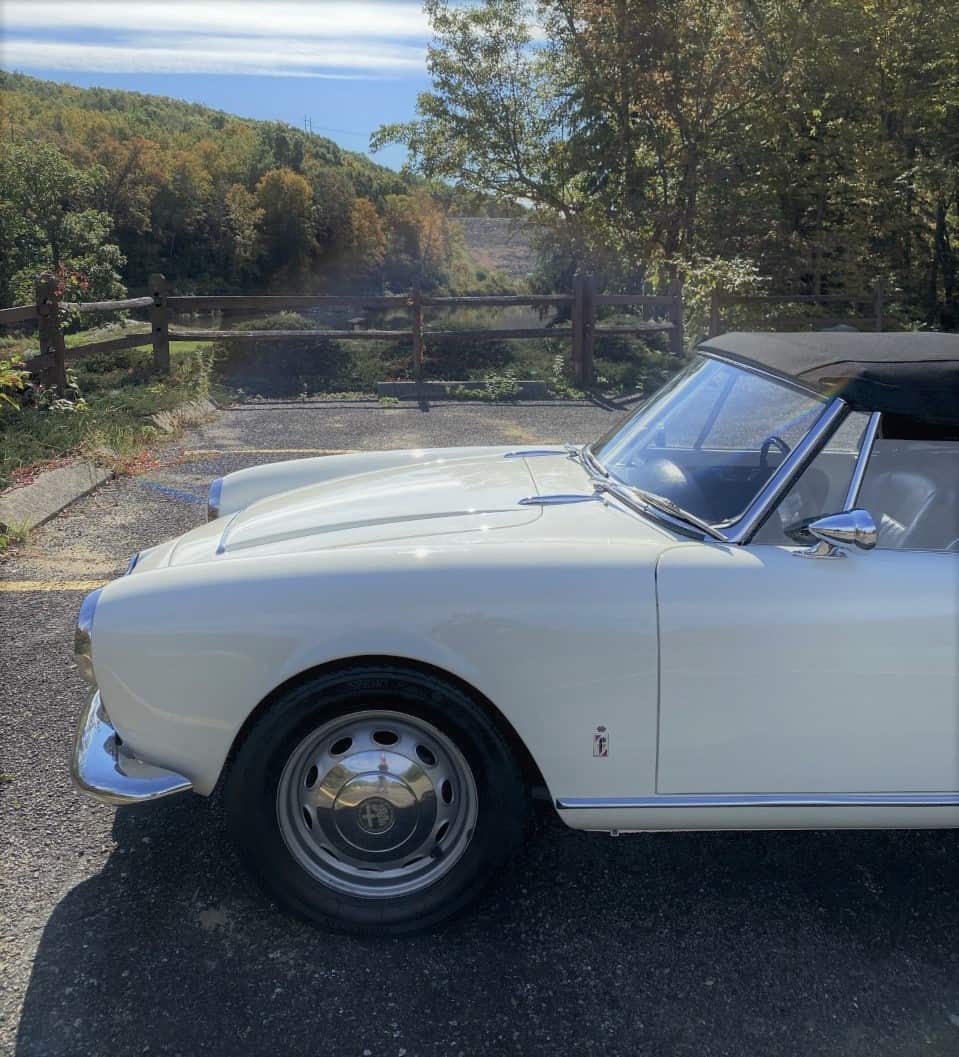I’ve owned my beloved 1965 Alfa Giulia Spider Veloce for 16 unforgettable years. At the end of 2015, in a moment of madness, I got the bug for a modern sports car. I bought a Boxster S and sold the Alfa to a dealer friend in California, on the condition that I could buy the car back if I had seller’s remorse… which I experienced shortly after I gave up the keys. So, I reached out to the dealer and got my Alfa back.
Earlier this year, the legendary automotive restorer Wayne Carini did a meticulous refurbishing on the car. It’s now back in my driveway and won’t be leaving anytime soon, except when I take it for a cruise around town or drive it in a rally.

I recently posted a brief story about the restoration of my ’65 Alfa Romeo on social media. I explained some of the reasons why I enjoy driving a 55-year-old car that’s missing all of the modern conveniences, including a radio. It’s just me and the machine, complete with all of the sights, sounds, smells and sensations of sitting 12 inches above the road at 60 miles per hour, as well as the adventure of impending breakdown that’s an inherent feature of every vintage car.
To my surprise, several people in my social network immediately responded with car stories of their own. The central theme in those replies was how the fundamental joys of driving, involving the human connection with a complex machine, is rapidly being taken away.
For those car enthusiasts who really love to drive, our relationship with cars and trucks has fundamentally changed over the past few years. Thanks to technology, buzzers now sound when we depart lanes or another car is passing us. High beam headlights turn on and off automatically. Panoramic cameras display our surroundings. GPS tells us when to turn and if there are traffic delays ahead. Brakes are applied in advance of us seeing any danger. Parallel parking is provided without touching the wheel. EZ-Pass systems eliminate the fun of throwing quarters into the toll booth basket.

Is it any wonder why texting while driving has become a problem when there is so little for drivers to do in modern cars? As we push closer to fully autonomous vehicles, it’s worth reflecting on what we’re giving up by becoming passengers at the wheel.
Over the past 100 years, driving has played an important role in the lives of most Americans. The significance of cars and trucks goes far beyond their ability to take us from point A to point B.
Our vehicles serve as reflections of our personalities, aspirations and achievements. We give them names. We talk about them. We work on them. We wash them. We photograph them. We write songs and make movies about them. We customize them. We compete against each other with them. We take pride in them. We escape in them. We put our lives in danger in them. And most importantly, we create life-long memories with them.

By the time I was 3-years-old, I could identify the make and model of nearly every car on the road. In high school, I spent most of my free time and money attempting to restore a fastback 1966 Plymouth Barracuda, largely to impress my friends and young ladies. As an adult, I’ve taken my Alfa Romeo on week-long road rallies for vacations, as well as countless trips on local roads, simply to clear my head. I’ve also owned more than 50 different daily drivers because – like so many other serious car enthusiasts – I’m always looking for a new or different driving experience.
As late as 1925, horses still outnumbered cars as the primary means of personal transportation. And despite their advantages over horses, there were plenty of people in my grandparent’s generation who bemoaned the introduction of the gasoline-powered horseless carriage.
So I appreciate that my lament over the emergence of autonomous transportation will not change the course of history as technology continues to gain greater control over our lives. I take some solace in knowing that the transition from manually controlled cars is unlikely to happen quickly. So I won’t be robbed of my passion for driving for as long as I am capable of operating a car safely.
I regret, however, that my young grandchildren may never enjoy an aspect of my life that has been so rewarding for me. They are likely to be much safer riding in self-driven cars, but they’ll miss out on the visceral connection with the machine and the sense of adventure, even when the journey is just to the grocery store.
For consolation, I plan to give my grandkids a taste of what they may be missing out on. As soon as they’re big enough to see over the dashboard and to reach the gas pedal (and perhaps with their mothers’ permission), I’ll teach them how to drive my 1965 Alfa Romeo. That way, if self-driving cars are still allowed on the road 25 years from now, then perhaps they can share the magic of driving with their own kids.
At the very least, they can tell their kids stories about the time that grandad let them tame his mechanical beast.
— Mitch Katz, Woodbury CT, founder of Premier Financial Services
Do you have a classic car with a story to share? It’s easy. Just go to this link, fill in the information and submit your story.








What an absolutely awesome story. Thanks for sharing.